
Bf109 G, of the Royal HUNGARIAN AIR FORCE Messerschmitt Bf 109, Ww2 Photos, Luftwaffe, Military
# In March, 1939, Hungary joined in the dismemberment of Czechoslovakia, supplying air support to its ground units. The air contingent carried out bombing, recon, and patrol missions, but met no aerial opponents. By December, 1939, Hungary had grown the Royal Hungarian Air Force into the following: By April, 1941, the RHAF had upgraded to:
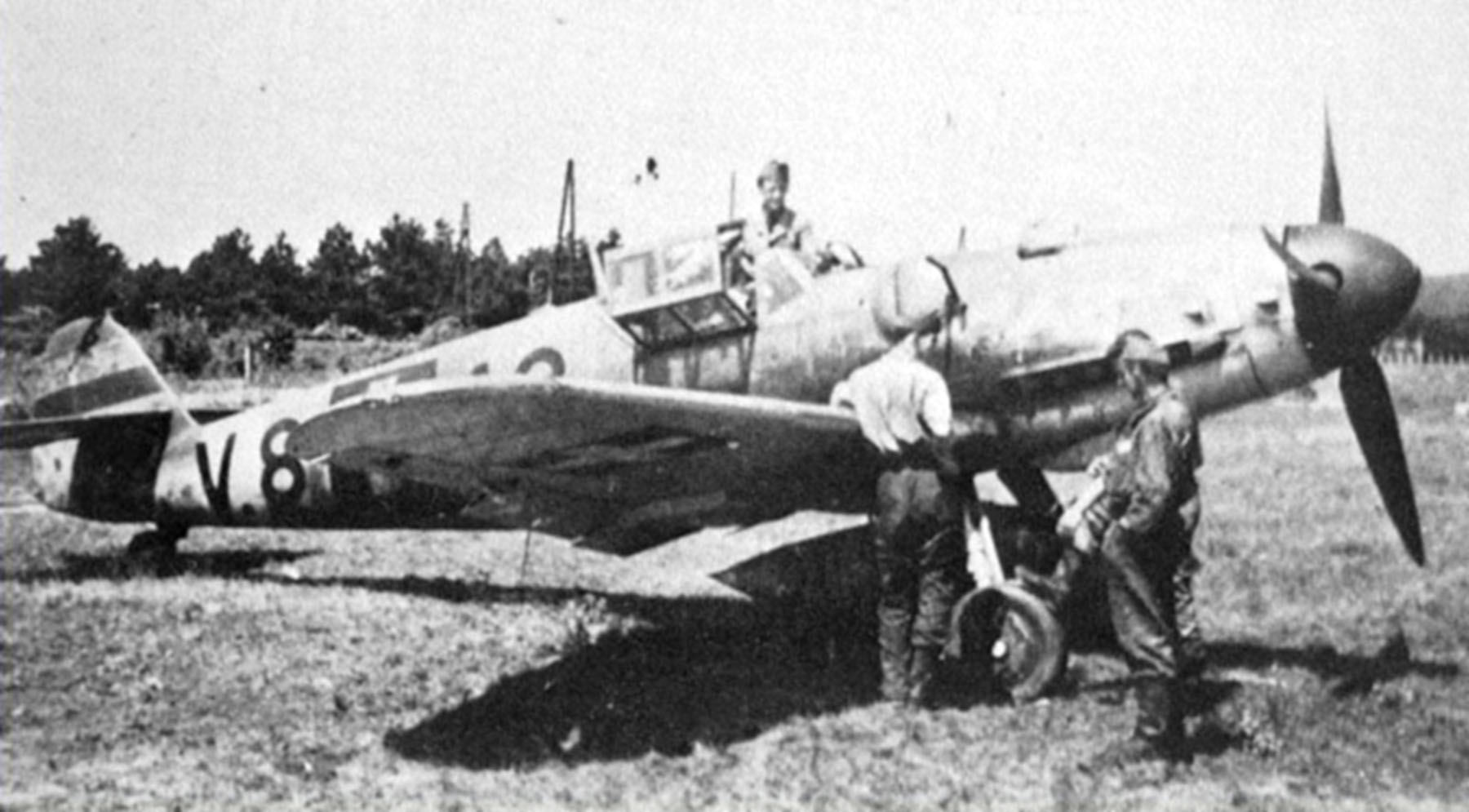
Messerschmitt Bf 109G6 RHAF unknown unit and pilot Hungary 1944 03
Hungary: The Royal Hungarian Air Force received 59 German-made Gustavs (G-2, G-6) in addition to about 700 aircraft built at factories at Gyor and Budapest. The Duna works were switching from the Me 210 to the Bf 109 G in March 1944.
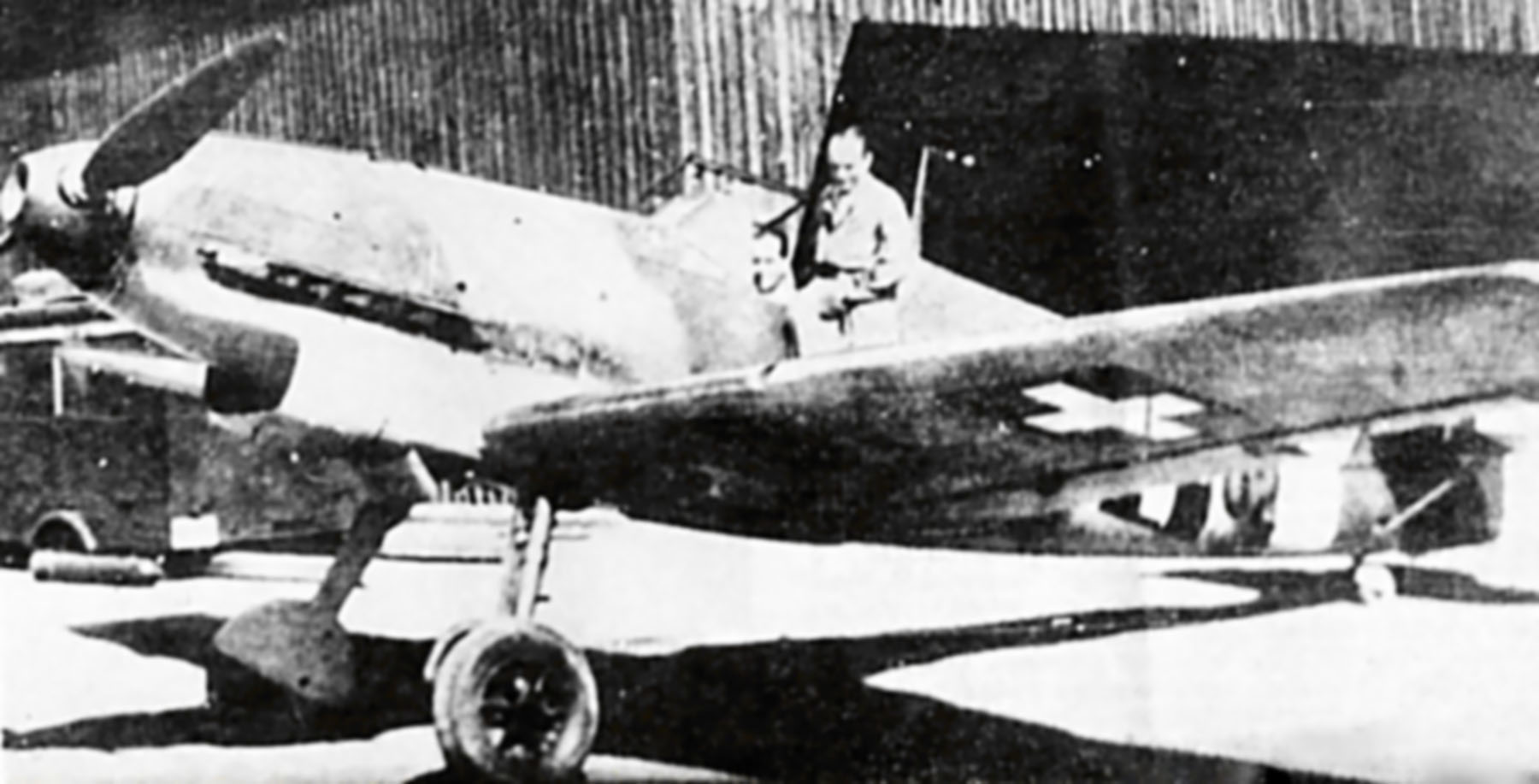
Messerschmitt Bf 109D1 RHAF V602 Hungary 1941 01
The Messerschmitt Bf 109 was a German fighter aircraft that was developed in the mid-1930s under the direction of Willy Messerschmitt and Robert Lusser. In its day, it was a modern aircraft with an all-metal construction, an enclosed cockpit and retractable landing gear.
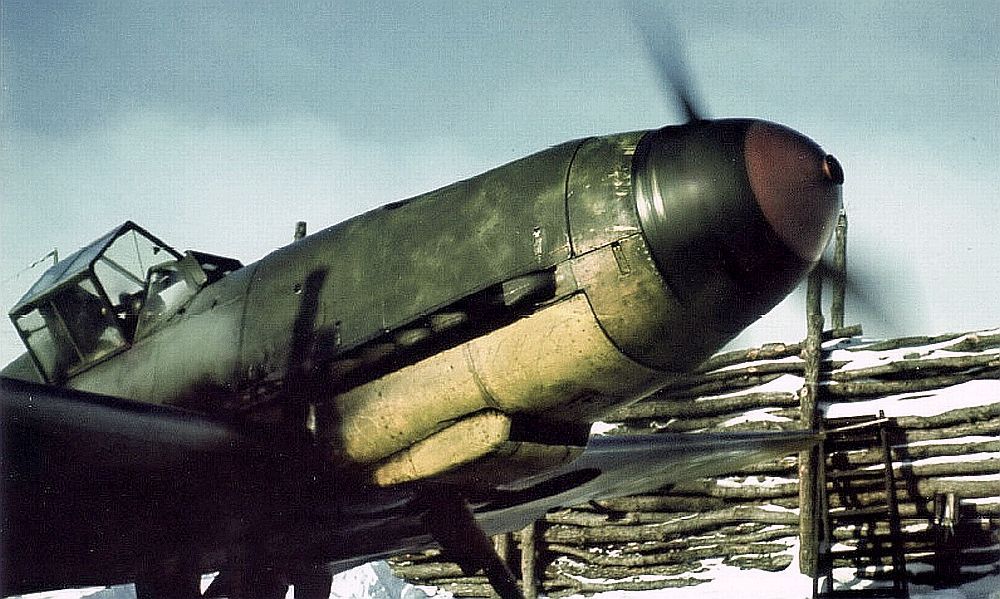
World War 2 Eagles Hungarian Bf 109 photogallery
Messerschmitt Bf 109 in Bulgarian Service. As an ally of Nazi Germany, Bulgaria operated a number of Messerschmitt Bf 109 fighters. The Bulgarian Air Force operated a total of nineteen Bf 109E-3s and 145 Bf 109Gs (of the -2/-6/-10 sub variants) Messerschmitt Bf 109E. Messerschmitt Bf 109E-4; Messerschmitt Bf109E-7 White 9 Bulgaria 1941

Magyar Bf 109. Hungarian Royal Army in ww2. Pinterest Aircraft, Planes and Aviation
Messerschmitt Bf 109 G-10 Erla RHAF 101 Vadaszezred Blue 12 WNr 612769 Neubiberg May 1945 01. Punka, György. "A Messzer": Bf 109s in the Royal Hungarian "Honvéd" Air Force. Budapest, Hungary: OMIKK, 1995. ISBN 963-593-208-1. Radinger, Willy and Walter Schick. Messerschmitt Me 109 (Alle Varianten: vion Bf (Me) 109A bis Me 109E). Oberhaching.

World War II in Color A CrashLanding of Hungarian Messerschmitt Bf 109
As a German ally in World War Two, the Royal Hungarian Air Force was provided with Messerschmitt Bf109s. Bf 109D and E models were used for training, with the F and then G models were used for combat. The Messerschmitt Bf109Gs were also manufactured in Hungary, with some components imported from Germany, such as armament and radio parts.
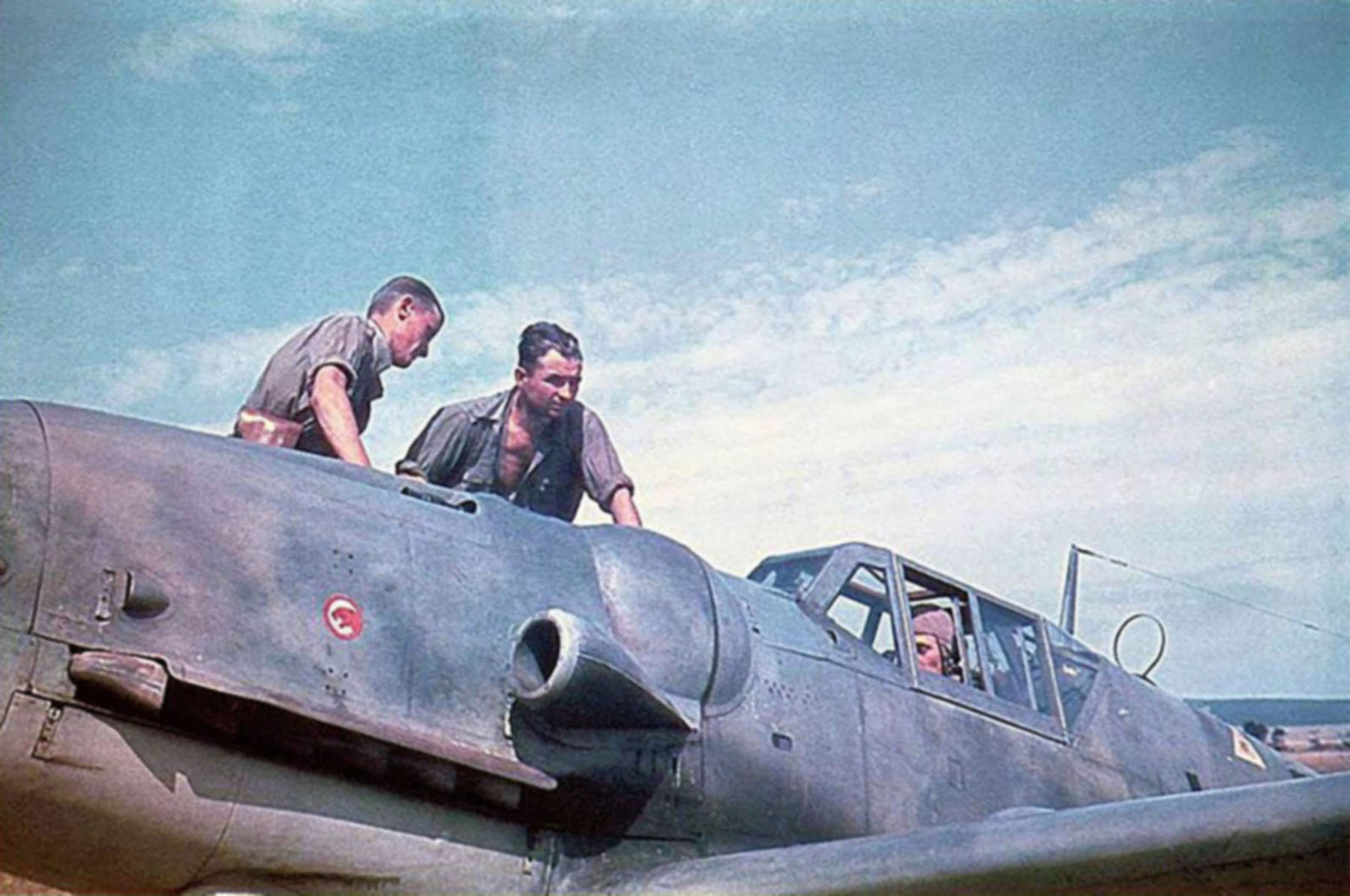
Messerschmitt Bf 109G6R3 RHAF Szazadparancsnok 5.2 unknown pilot Hungary 1944 01
The Messerschmitt Bf 109 is a German World War II fighter aircraft that was, along with the Focke-Wulf Fw 190, the backbone of the Luftwaffe 's fighter force. [3] The Bf 109 first saw operational service in 1937 during the Spanish Civil War and was still in service at the end of World War II in 1945. [3]

Messerschmitt Bf 109 in Hungarian Service Destination's Journey
Hungarian Bf 109 G-10 of the 101st Fighter Group in Austria, May 1945. A Hungarian Bf 109 G-10. Hungary mass-produced Bf 109 Gs, building around 700-800 in total. Hungary used their Bf 109s on the Eastern Front and in the defence of Hungary. As far as I'm aware they were not modified in any way, other than maybe having instruments in Hungarian.

Hungarian Bf109 Aircraft Painting, Aircraft Art, Fighter Aircraft, Fighter Jets, Luftwaffe
Hungarian flying ace Dezso Szentgyorgy is honored by a unique Bf-109 in winter camouflage as part of the upcoming Battle Pass season. Check out the details h.

172 Messerschmitt Bf 109 L1; aircraft ‘X029’ of 101. Vadaszezred, III. Osztalyszazad of the
Combat service in the Spanish Civil War Bf 109A from the Condor Legion with Spanish rebel markings Dozens of Messerschmitt Bf 109 fighters, including the A, B, C, D, and E variants first saw active service in the Condor Legion against Soviet-supplied aircraft in mid 1937 as a testing ground for the new German fixed-wing fighter plane.

Messerschmitt Bf 109 in Hungarian Service Destination's Journey
The 101. "Puma" Honi Légvédelmi Vadászrepülő Osztály was created from several existing Hungarian fighter units on 1 May 1944. The unit flew Messerschmitt Bf 109 G-6, G-14, G-10 fighters, from both domestic and German production. Organisation Commander of the Puma Group (101/I.): Major Aladár Heppes, the "Old Puma"

Messerschmitt Bf 109 Price, Specs, Photo Gallery, History Aero Corner
In 1938 Hungary decided to unify their aircraft camouflages. Near the end of the year the Krayer company started supplying the paints for this endeavour. The exact pattern wasn't set yet and would finalize over a period of time. This camouflage was abandoned around 1942, when planes were left in their original camouflage.
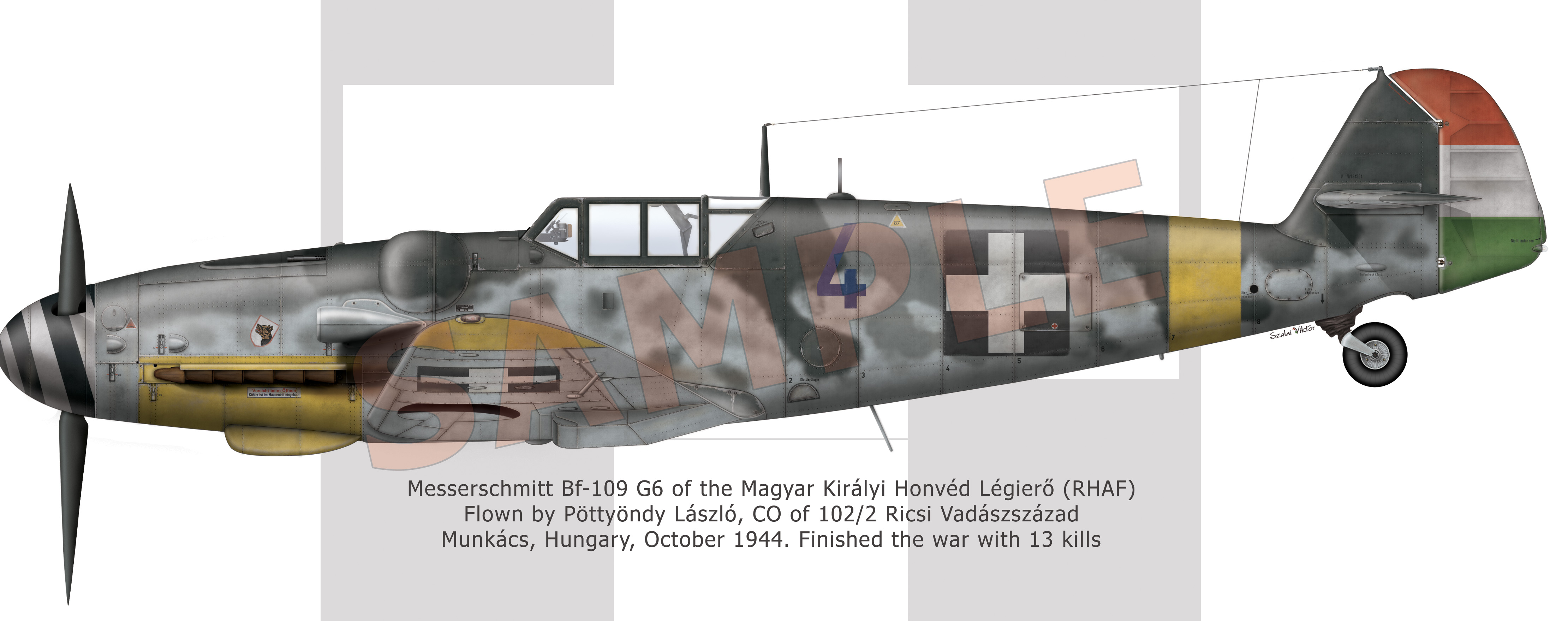
World War 2 Eagles Hungarian Bf 109 photogallery
Hungarian Bf109 G-14 dodgem37 By dodgem37 February 5, 2014 in Works in Progress Share Followers 2 1 2 3 Next Page 1 of 3 dodgem37 LSP_Members 9.9k Gender:Male Location:Silver Spring, Maryland USA Posted February 5, 2014 (edited) Some may remember this short thread from 2009: Hungarian Bf109G-14 Otherwise looking a bit like this:
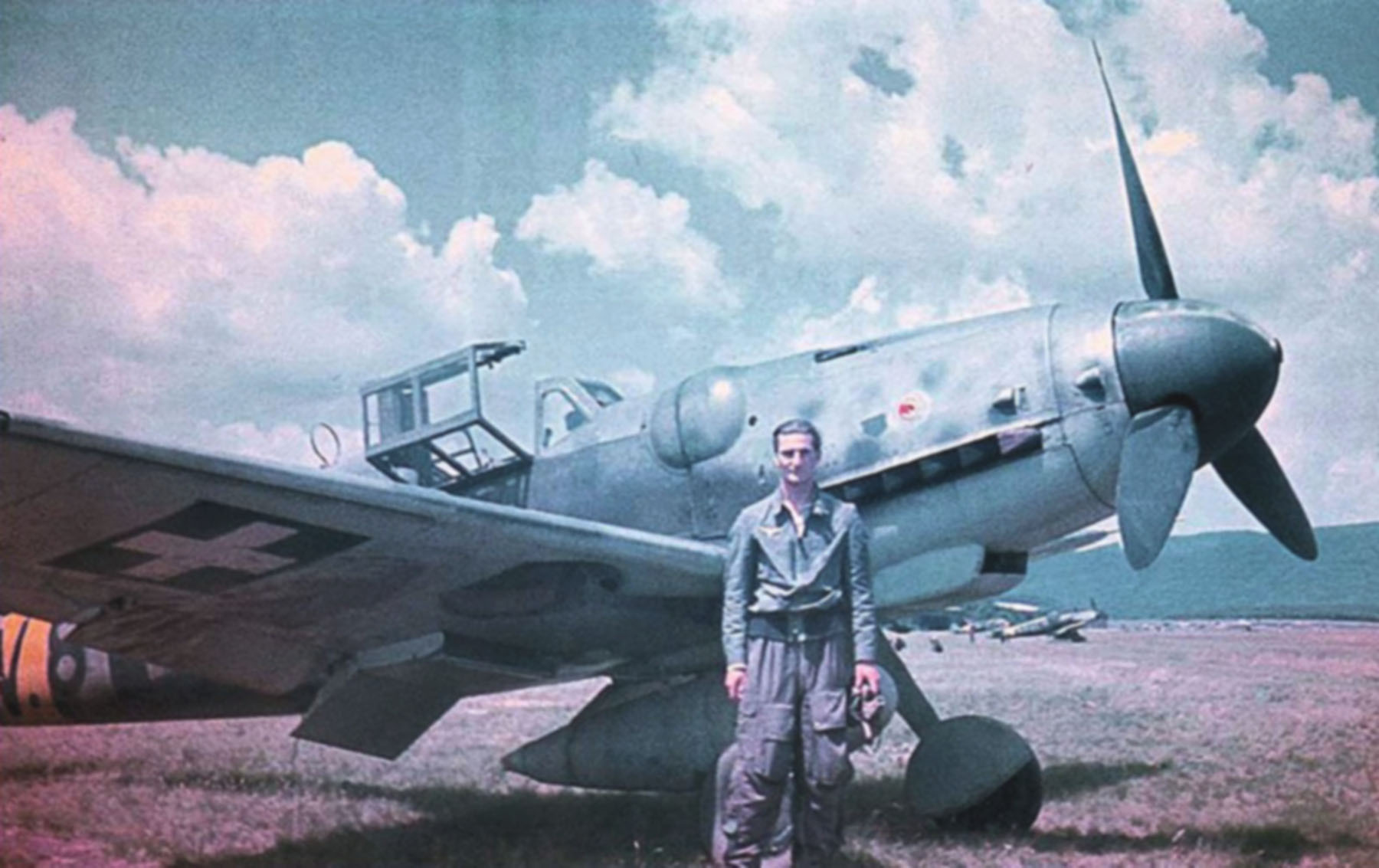
Messerschmitt Bf 109G6's of the RHAF Magyar Királyi Honvéd Légierő Hungary
Japan Luftwaffe Romania Spain Spanish Civil War Switzerland Yugoslavia Combat service in the Spanish Civil War Dozens of Messerschmitt Bf 109 fighters, including the A, B, C, D, and E variants first saw active service in the Condor Legion against Soviet-supplied aircraft in mid 1937 as a testing ground for the new German fixed-wing fighter plane.

Messerschmitt Bf 109F4, Royal Hungarian Air Force 1/48 Bf 109 Eastern Front iModeler
Hungarian Bf-109 F in export colours: One of the most impressive looking Hungarian Bf-109 F is the 3-tone camouflaged example, the 'Calendar star.' There are several 'urban legends' among the historians about the reason of the camouflage, the most prominent are simply mistakes: - it was repainted for propaganda reasons
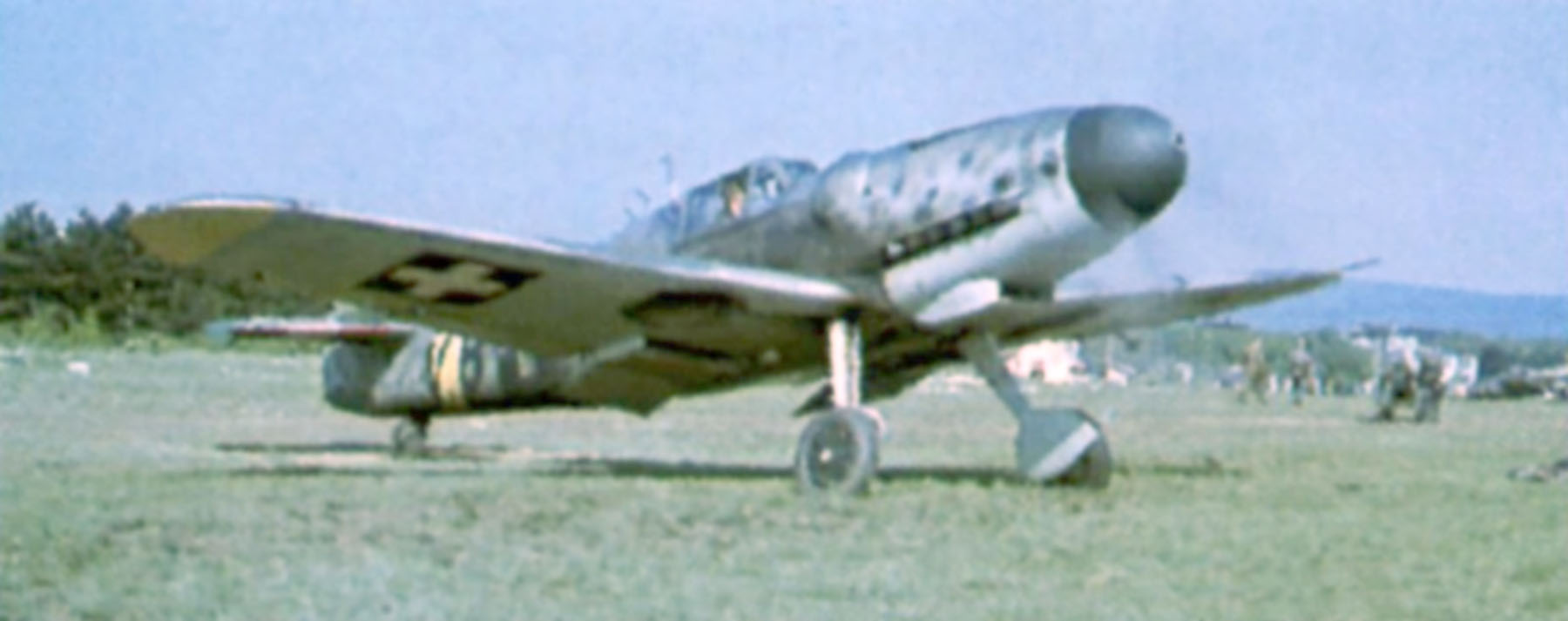
Messerschmitt Bf 109G6 RHAF unknown unit and pilot Hungary 1944 05
Fighter Aircraft- 20 to 22 Bf 109A and 341 Bf 109B Built When the Nazis came to power in Germany during the early 1930's they sought to modernize their armed forces with more modern military equipment. The founding of a new air force, the Luftwaffe as it was known in Germany, was one of the main priorities of the new regime.